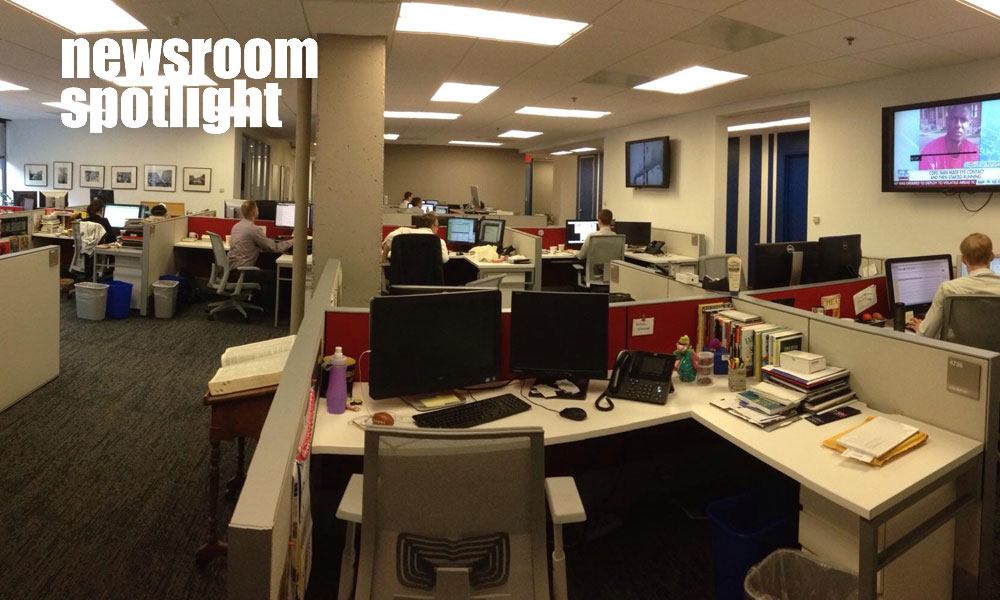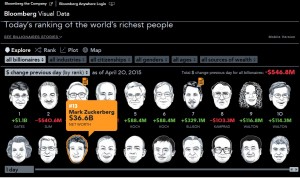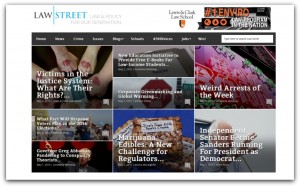
Editor’s Note: This Q&A is part of “Newsroom Spotlight,” a series of conversations with journalists about what’s going on in their newsrooms and the media industry. The interview excerpts have been lightly edited and organized for clarity. The student reporter conducted this interview while interning for U.S News.
As many news organizations race to produce breaking stories before their competitors, other media companies are using a different strategy to gain readership. At U.S. News & World Report, the goal isn’t just to disseminate news first, but to take a more in-depth look at major national issues, managing editor Lylah M. Alphonse said.
One way U.S. News is analyzing these issues is through its “Data Mine” blog, which Alphonse called one of the most innovative aspect of the newsroom over the past year.
In posts for “Data Mine,” writers make sense of numbers behind the issues using analysis and data visualization. Alphonse added they have “some great original data visualization projects in the pipeline.”
American Journalism Review spoke with Alphonse to find out how U.S. News & World Report’s newsroom operates and how it’s adapting to journalism in the digital age:
American Journalism Review: How many employees are on U.S. News’ editorial staff, and how much content do they produce?
Lylah M. Alphonse: U.S. News’ set up is a little bit unusual in that we have the news-and-opinion, side and the products side. The products side handles the rankings, the “best of” lists, the consumer advice. I focus on the daily news side of things, and the managing editor for opinion Robert Schlesinger, handles the opinion pages. Our newsroom has about 30 full-time writers and editors who produce about 20 pieces of original content per day, not including processing AP content, stories from our content partners, or freelance blog posts in the opinions section.

Lylah M. Alphonse
ARJ: Can you tell me about your favorite project U.S. News is working on?
Alphonse: Well, we’ve been doing a lot more with data journalism, not just reporting on data and not just data visualization but kind of a hybrid of the two. We are fairly unusual for a legacy news product in that we have a journalist who is dedicated to reporting on data, who is also very proficient in coding. So we’re able to do a lot in that space. We’re doing a lot of really great things with Data Mine, which is our data blog. We’ve got some great original data visualization projects in the pipeline.
AJR: How does your newsroom approach packaging stories for the web?
Alphonse: We’re entirely online so all of our focus is on the web. We have special reports, which come in a few different forms; some look like a magazine feature story, others act as stand-alone special sections. Then there are micro-reports, which are a more traditional package of stories based around breaking news or a recent event. Those packages provide original news analysis, related wire stories from the Associated Press or other content partners, photo galleries, quizzes and other types of content that we package together into a single offering for our readers.
AJR: What’s U.S. News’ mobile strategy?
Alphonse: Right now that’s still a work in progress. We are optimizing the site for mobile, but we are still figuring out the best way to take advantage of that medium. More and more readers are using mobile devices to access our content, so that’s definitely a challenge that we’re trying to meet head on.
AJR: Which media companies do you think are disrupting the news media landscape? How and why?
Alphonse: That’s a tough question because any news media that’s trying to succeed is constantly reinventing itself because of the challenges online, because of the changes in readership and changes in reading habits. So I’m not sure I can say there’s one media company that’s really doing most of the disrupting. The news media that are most likely to succeed are constantly evolving.
AJR: What do you think sites like Buzzfeed, with their listicles and user generated content, do to the industry?
Alphonse: BuzzFeed changed the media landscape about two and a half, three years ago, and other people are just catching on because BuzzFeed today is not the same BuzzFeed it was three years ago. They are still doing lists, they are still doing fluffy, user-generated content, but they’ve taken the revenue they’ve earned from monetizing these things and are sinking it into long-form journalism. They recently opened a foreign bureau. So it’s interesting that BuzzFeed, which is kind of seen as the site that changed the Internet in terms of news consumption, is actually now behaving more like a legacy product.
AJR: What emerging technologies or storytelling methods do you want to learn more about because they have the potential to impact news?
Alphonse: Oh, everything! There’re so many, and there’s new stuff every day. I think that we’re learning how to optimize social, which is more than just Facebook and Twitter, but Twitter especially has become a storytelling vehicle in a lot of ways.
AJR: How does your newsroom use analytics to make daily coverage decisions?
We monitor our metrics through several different applications and use the results to decide what to post on social media when, to see when a story is trending and if it’s worth a follow up. Our metrics inform our news decisions but are not the deciding factor in them.
AJR: Are all reporters required to use social media to promote their stories?
Alphonse: We encourage all reporters to use social media to promote their stories. We also have a social media editor specifically for the news side, who works with the social media editor for the company to promote stories and work to really optimize our reach across different social media platforms.
AJR: Does your news organization hold events?
Alphonse: Yes, we definitely we hold events. We have two big conferences, STEM Solutions and Hospitals of Tomorrow, and we’re considering events in other news spaces as well. These events are mostly geared toward those specific industries. They’re not events that we’ve created in order to generate news; they’re events we’ve created to allow people within the industry to discuss the news of the industry.
AJR: On a scale of 1-5, how optimistic are you about the future of news?
Alphonse: Five. I think people always need to know what’s going on. There will be a need for news, and there will always be a need for people who can not only report and present the news, but who can interpret it. If anything, I think the need for interpretation, the need for someone to provide context, will only grow as journalism evolves.







